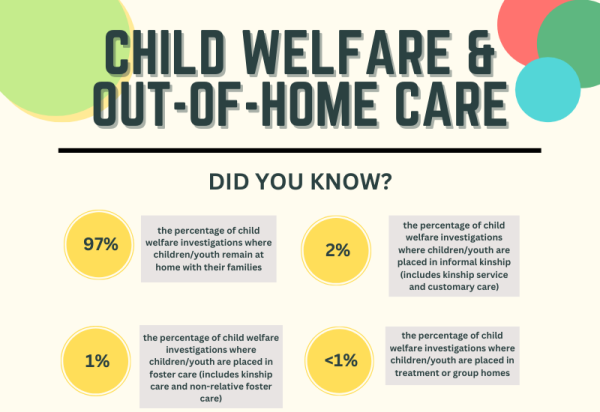Child welfare agencies work in partnership with families and communities to keep children and youth safely in their homes. However, when children cannot remain with their primary caregivers, kin and alternate care placements are prioritized. The last five years have seen an increase in the proportion of children and youth residing with people they know, as well as a decrease in children and youth in family-based foster care. There is also a decrease in children and youth in extended society care moving to legal custody and adoption. To see a full picture of out-of-home care placement data and trends in Ontario, check out the infographic below or download a copy here. (Note: you will need to download the PDF version to view the additional graphs and data linked within it.)
To learn more about why child welfare is focused on keeping children and youth connected to their families and communities and in placements that reflect their intersectional identities, click here. Additional resources about kinship and alternate care are available in our Library Guide here.

